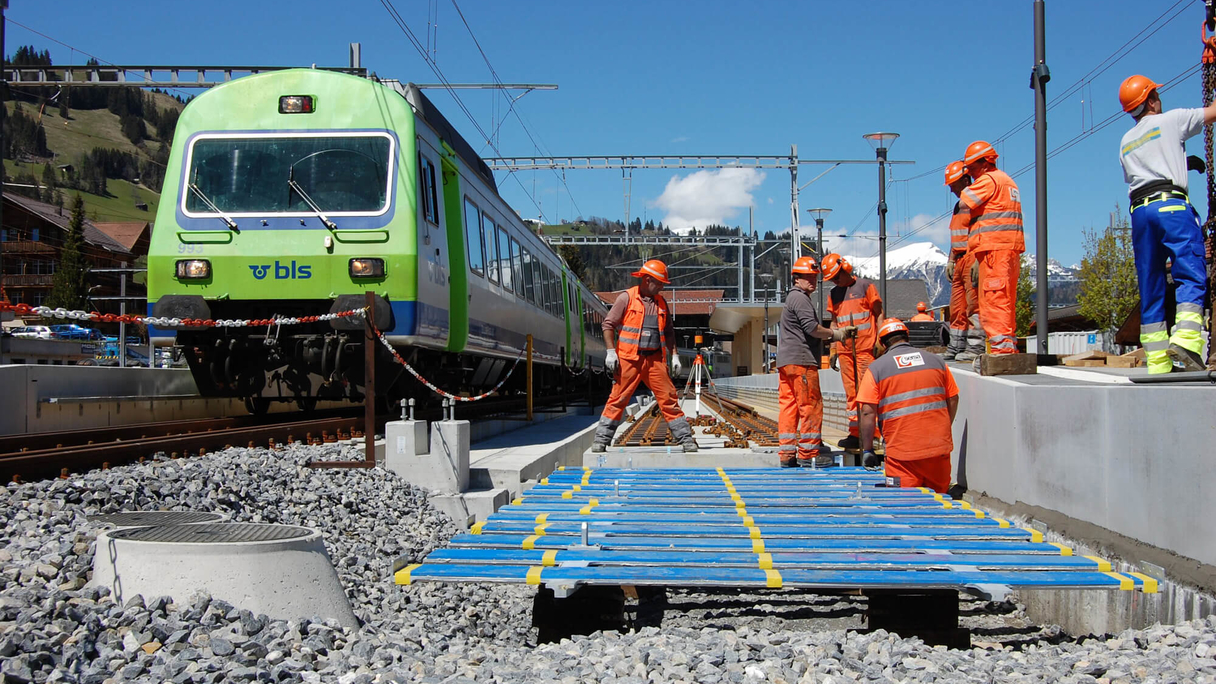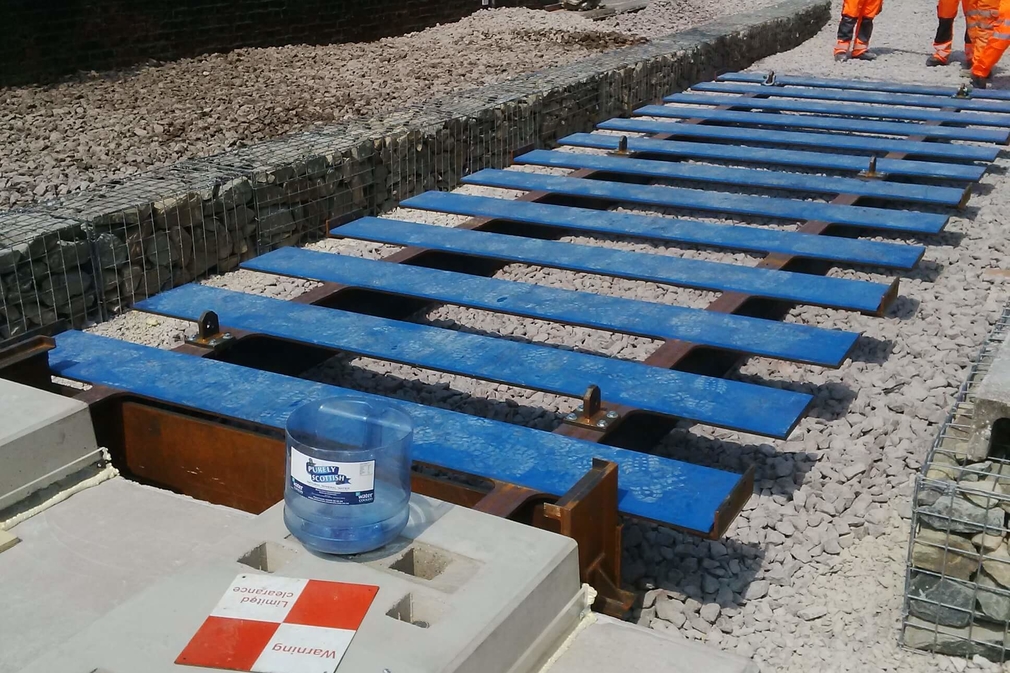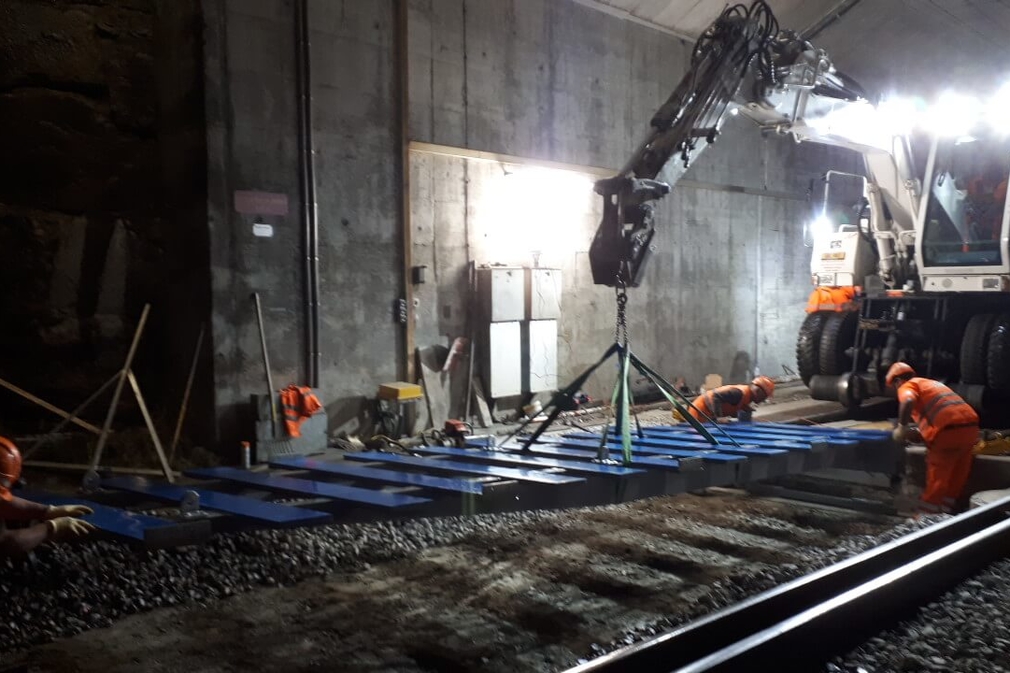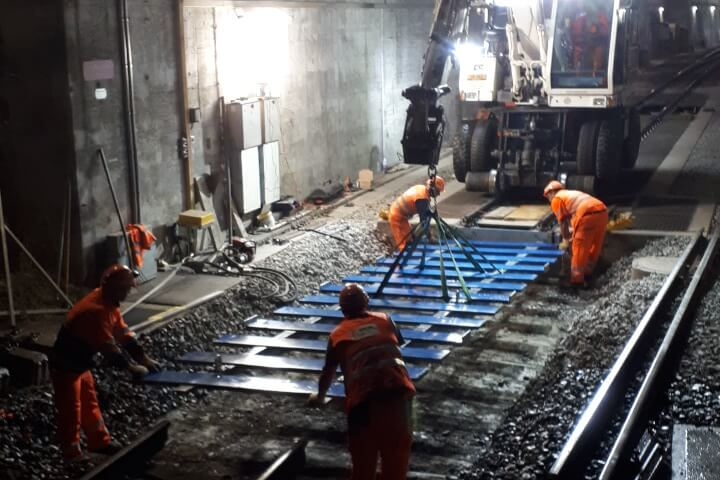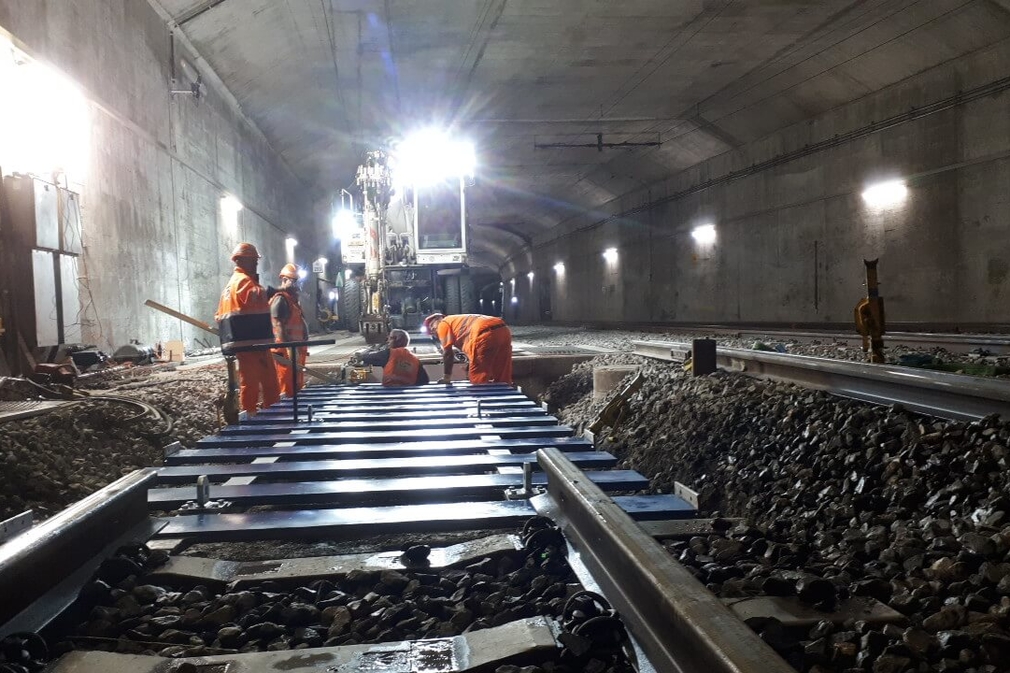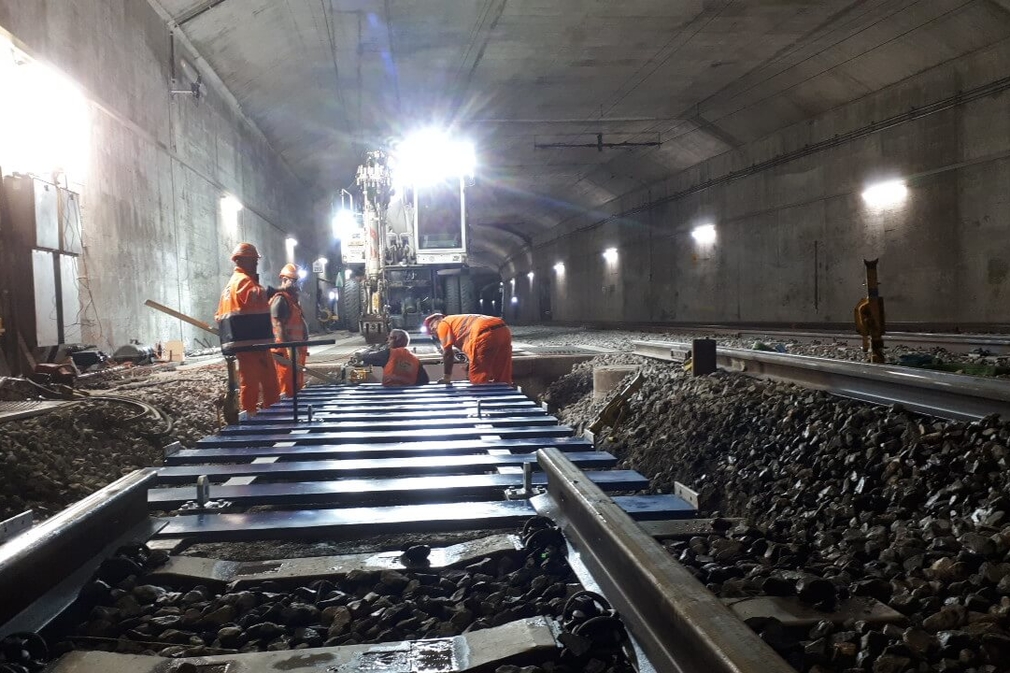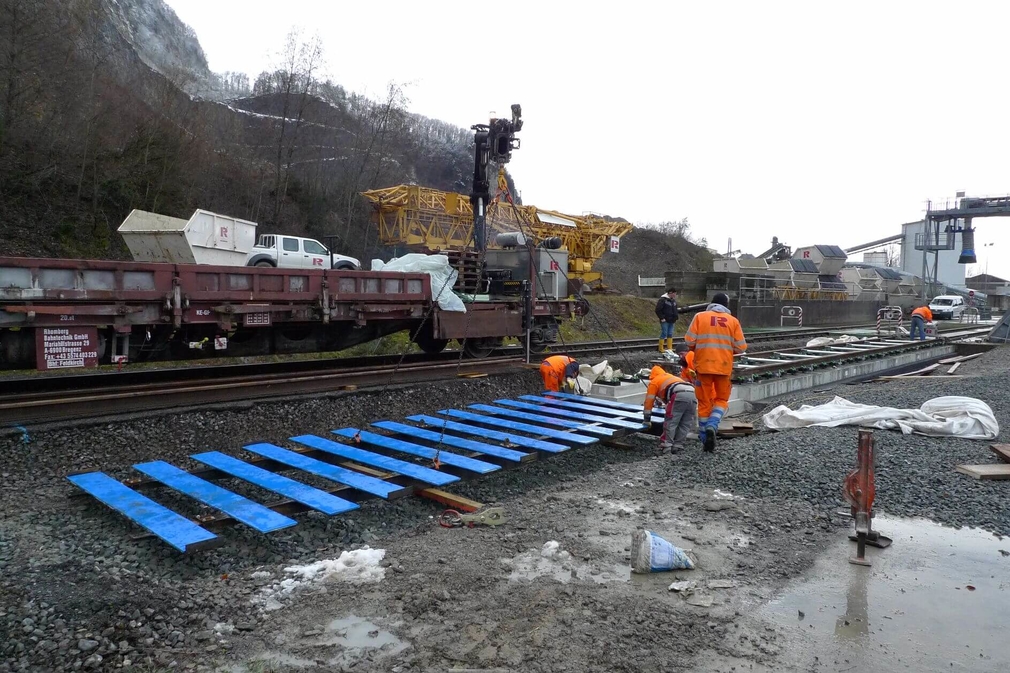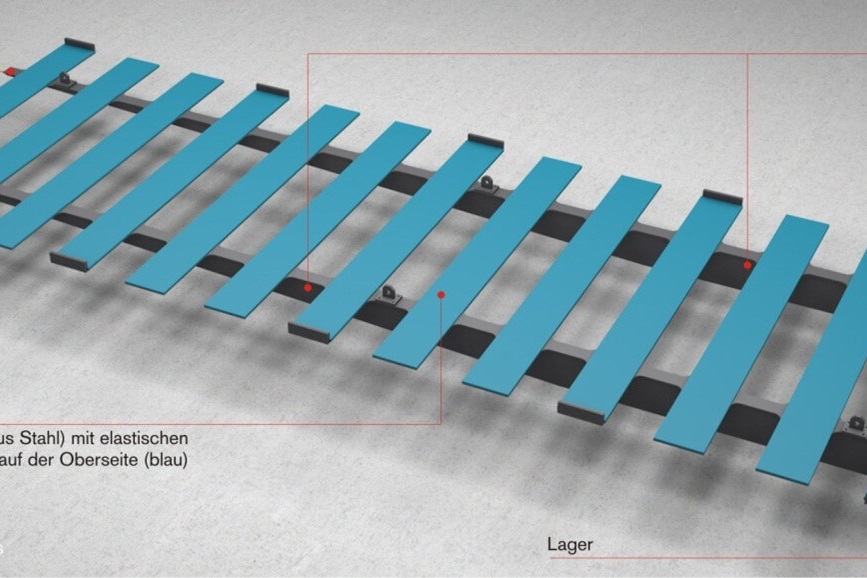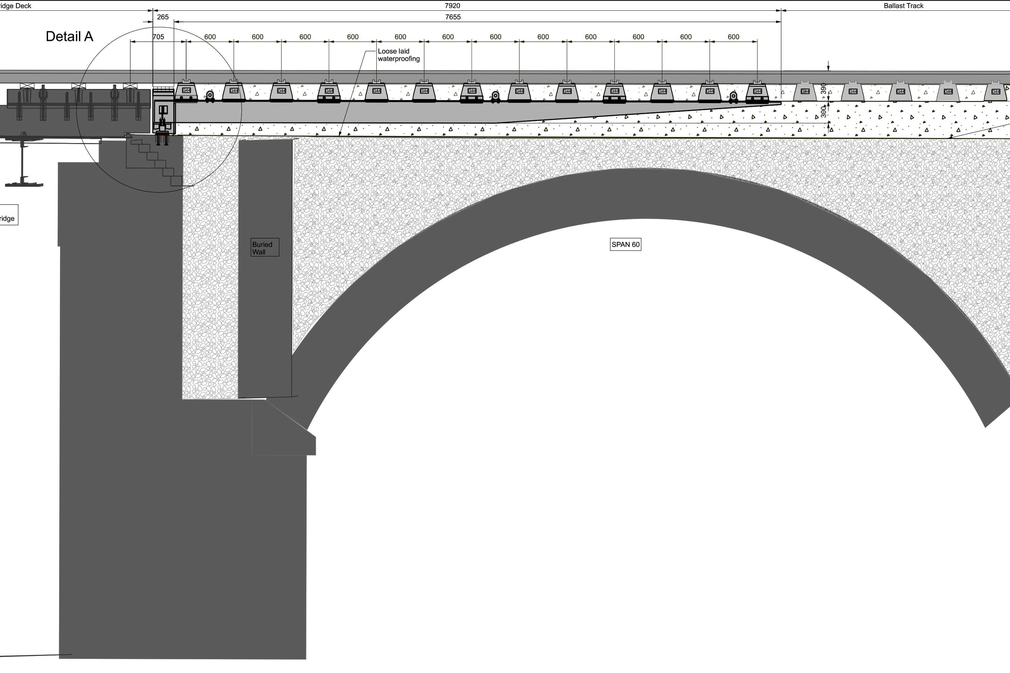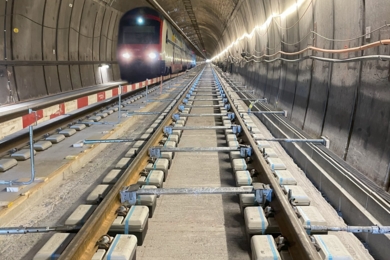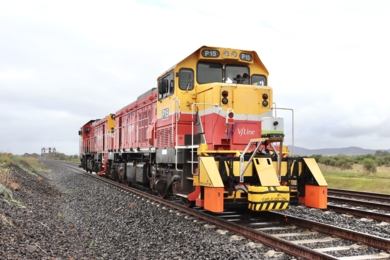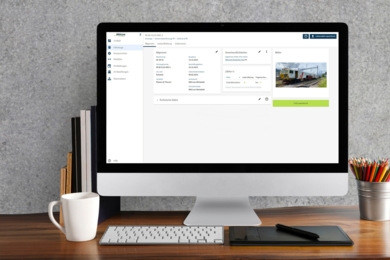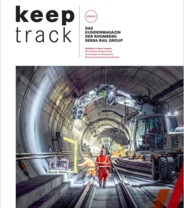For the first time, Rhomberg Sersa Deutschland (RSD) is connecting ballast tracks and slab tracks with the V-TRAS level crossing module.
Lower maintenance and greater track availability: These are the advantages the German subsidiary of the Rhomberg Sersa Rail Group (RSRG) believes to be achievable – and promises to its client Deutsche Bahn – by installing a V-TRAS module on the Wendlingen-Ulm high-speed track. It is the first such module in Germany. The preparatory planning for it has already been completed. Installation is scheduled for completion in spring 2022. At the same time, the installation of the module on other existing bridge structures is under preparation. RSD is also carrying out tests as it wants to get the module approved for speeds up to 250 km/h.
The company has ample experience as it is part of the international RSRG: “V-TRAS has proven effective for more than eight years in a wide variety of track categories, be it in the transition area from slab track to ballast track or as a transition structure from bridges to earthworks,” says Norman Krumnow, Head of Innovation at RSD. “The group has already installed it around 50 times. This has made the existing railway infrastructure more reliable and efficient. This is in line with our client-focussed approach for the transport of people and goods.”
The advantages
The different types of track construction differ greatly in terms of their performance over time. As a result, transitions often develop into sensitive trouble spots during operation. V-TRAS ensures that permanent way and track bed settlement and settlement between engineering structures and earthworks are seamlessly compensated – regardless of slab-track design. Special sleepers or other additional measures are unnecessary as the installation uses conventional track-laying methods.The module provides all the advantages of factory prefabrication and the small number of individual elements reduces potential sources of error. And the additional track equipment can be integrated without any problem. The installation of the V-TRAS transition module is therefore the ideal option for not only ensuring problem-free rail traffic but also the long-term and sustainable usability of new and existing rail-bound infrastructures. At the same time, the installation of V-TRAS is a sustainable construction option which meets economic requirements.
Installation variants and approvals
There are six different transition areas from engineering structures to earthworks. In February 2021, Rhomberg Sersa Deutschland GmbH received approval from the German Federal Railway Authority for all these variants:
- Var 1: Slab track to earthworks <-> ballast track to earthworks,
- Var 2: Ballast track to earthworks <-> ballast track to bridge structure,
- Var 3: Ballast track to bridge structure <-> slab track to bridge structure,
- Var 4: Slab track to earthworks <-> ballast track to bridge structure,
- Var 5: Slab track to bridge structure <-> ballast track to bridge structure,
- Var 6: Slab track to earthworks <-> slab track to bridge structure (not an area of application for V-TRAS).
V-TRAS is also approved up to a speed of max. 160 km/h and Variant 1 is approved for installation in Switzerland, Austria, Australia, and Great Britain.
